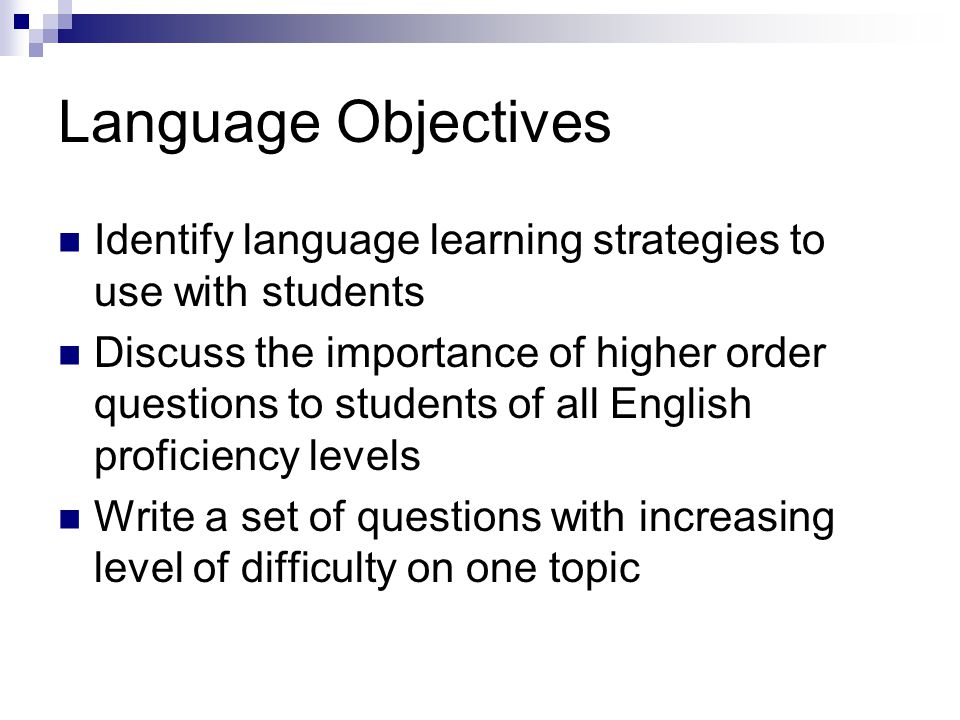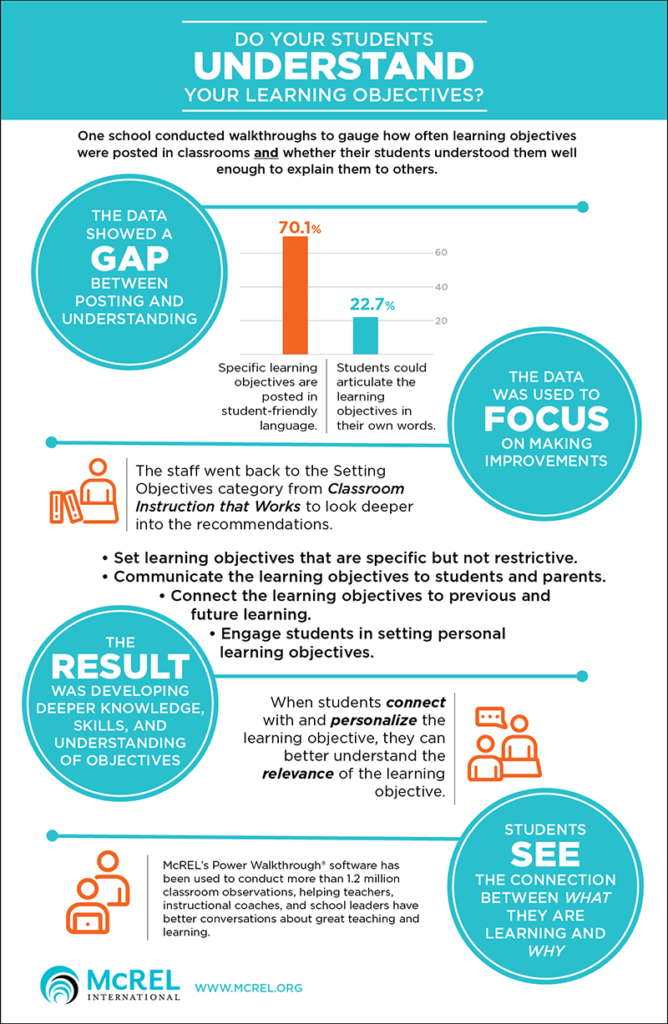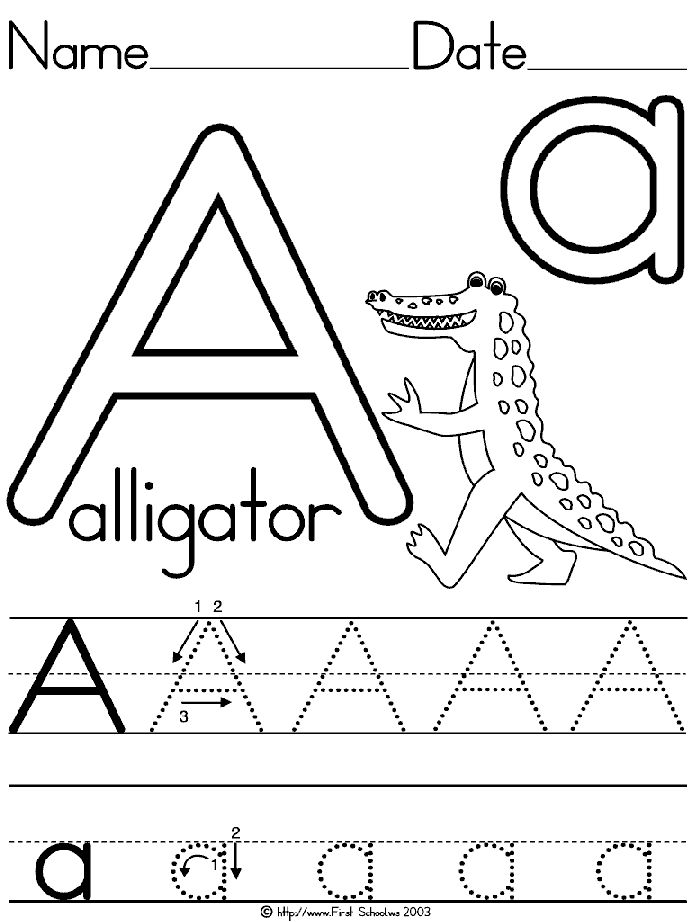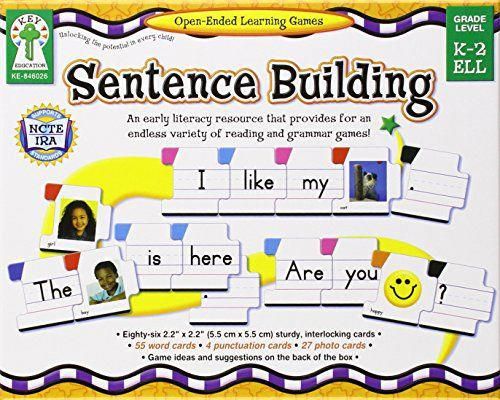Developing vocabulary strategies
7 Creative Strategies To Improve Vocabulary Teaching
Vocabulary skills are critical to each student's academic achievement. In and out of the classroom, student success depends on grasping reading comprehension and English language development. Effective vocabulary strategies help you educate children as they learn new words.
Developmental delays, reading difficulties and infrequent exposure to new words can cause setbacks in student progress. However, most teachers agree that passive learning isn't the best way to help students grow their vocabulary skills.
What teaching strategies should you use instead to streamline vocabulary instruction?
How is vocabulary knowledge developed?
Vocabulary is understanding how to use words in relation to their meaning. Developing new vocabulary involves more than just looking up words in a dictionary and using those words in sentences.
Students' vocabulary grows throughout their lifetime through direct and indirect learning. You can adopt direct teaching methods such as:
- Introducing specific word instruction geared toward increased comprehension and vocabulary.
- Leading wordplay activities that build upon previously learned words.
- Encouraging students to read often to boost their word knowledge and language development.
- Using the dictionary to teach word meanings and asking students to use those words in sentences during class participation.
- Utilizing Cognate Awareness (ELL) to teach kids similar words in English and other languages, such as Spanish. Cognates are two words in different languages that have similarities including spelling, meaning, and pronunciation.
- Making speaking skills a priority when learning vocabulary.
- Reading stories to your students. It helps them to question and learn specific words. Books that contain pictures may help reinforce the 'bigger' words for your students.
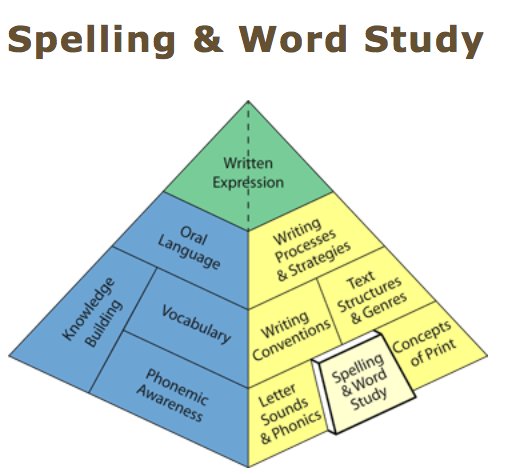
Deepening vocabulary skills takes a lifetime. It’s vital that students understand how to learn new words so that they don't feel singled out if they're struggling to enhance their vocabulary.
Effective vocabulary learning techniques
When teachers use word learning techniques and teaching strategies like dictionary use, morphemic analysis, cognate awareness and contextual analysis, students catch on quickly and can recall new words, synonyms and antonyms. Each of these components builds on their prior knowledge of other words to create their own vocabulary library.
Effective teaching strategies include various methods you can use in the classroom today:
- Expose students to the same word many times to support learning
- Give students the definition of the word and ask them to write that word in a sentence
- Use graphic organizers to define new words
- Teaching kids to be independent and learn how to correct their own errors — it's ok to make mistakes!
- Bring technology into the classroom and use digital tools suited to teaching vocabulary.

- Let students practice often
Simple and effective vocabulary strategies help your students build an impressive vocabulary. But we have more tactics to share with you!
Be sure to have a look at the comprehensive list of targeted strategies to help you teach vocabulary to your students.
1. Take a student's perspective
You understand what it's like to grow your own vocabulary — you’ve been doing it for many years! With your higher education and experience in reading and writing, there is much wisdom you can pass onto your students.
Adjust lesson plans to accommodate any problems that students encounter as they learn new words. Show them how to take a word they've never heard of before, sound it out and show its use in a sentence or two. They'll pick up on its meaning through the sentences.
One way to level-up this language technique is to take a culturally-responsive approach. And you can do this by framing new words in examples that are familiar to your students whether it's geographically, culturally or socio-economically, for example.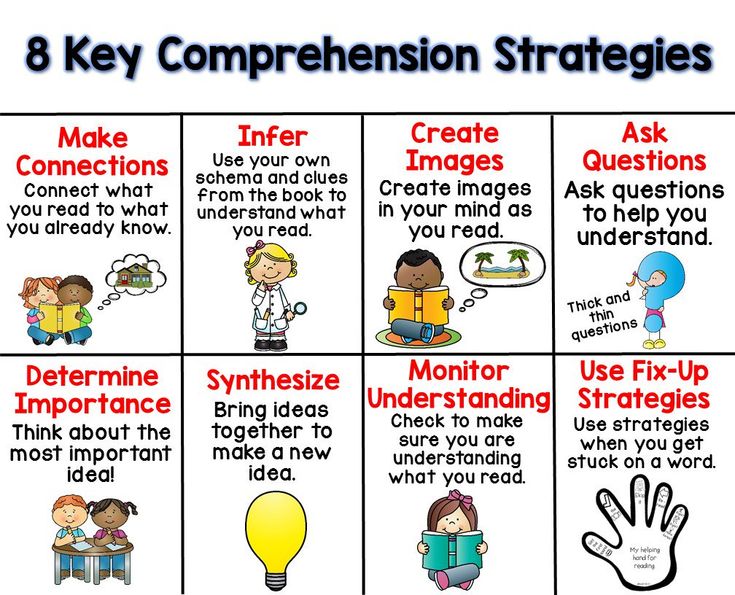
2. Try using a word wall
A word wall encourages kids to focus on learning new words. Word walls are easy to create! Simply type or handwrite a list of words in large letters and hang them up on a bulletin board or a wall where students can see it every day. Be sure to add new words throughout the year so that your students deepen their knowledge of unknown words and their meaning.
Invite your students to take part in creating a bigger wall and add pictures, synonyms and antonyms to each word. If they're having trouble grasping the meaning of specific words, adding synonyms can help ease confusion.
Word walls provide a fun way to increase your students' vocabulary skills.
3. Create vocabulary notebooks
Vocabulary notebooks encourage students to expand their prior knowledge and boost their English language proficiency. Hand out notebooks so that they can jot down new words and their meanings. You can motivate students to think about writing synonyms and antonyms beside each new word.
To make vocabulary notebooks more fun, ask your students to draw pictures or create charts to show how they used a word in a few sentences. It gives them an opportunity to practice that word a few times and reinforce its definition.
And speaking of opportunities, a perfect time for students to practice their language with vocabulary notebooks is during writing periods.
A regular cadence of writing periods coupled with their vocabulary notebooks will encourage students to reflect on the words they’ve learned and to actively use them in their writing to get additional practice.
These vocabulary word books remind students of their advancement. It'll help them realize just how much they've progressed throughout the year.
4. Connect word meanings with semantic mapping
Semantic mapping is a type of graphic organizer that displays a relationship between specific words and phrases.
Select one student to draw a keyword on the chalkboard. Next, encourage students to participate in creating the map and write words that are connected to the keyword. For example, a student or teacher could write the keyword "farm" on the chalkboard. Your students would take turns writing words such as cow, barn, horse, hay and farmer.
For example, a student or teacher could write the keyword "farm" on the chalkboard. Your students would take turns writing words such as cow, barn, horse, hay and farmer.
Semantic maps help build students' vocabulary and reading comprehension. Teachers can add more challenging words each week. As students grow their vocabulary, they'll become confident in their reading and writing abilities.
5. Make word cards
Word cards help students to develop their ability to learn new words and highlight their meaning. There are a few ways you can get students to create their own word cards.
In this example, students can write single keywords on separate blank cards. They'll determine if that word is a noun, pronoun, adjective or verb. Make sure they write the definition below each word. Instruct them to use those words in a few sentences, or turn the word into a quick writing prompt.
Consider putting students into small groups of two to four kids. They can help each other to develop their vocabulary by introducing keywords to each other and asking them to use those words in a sentence.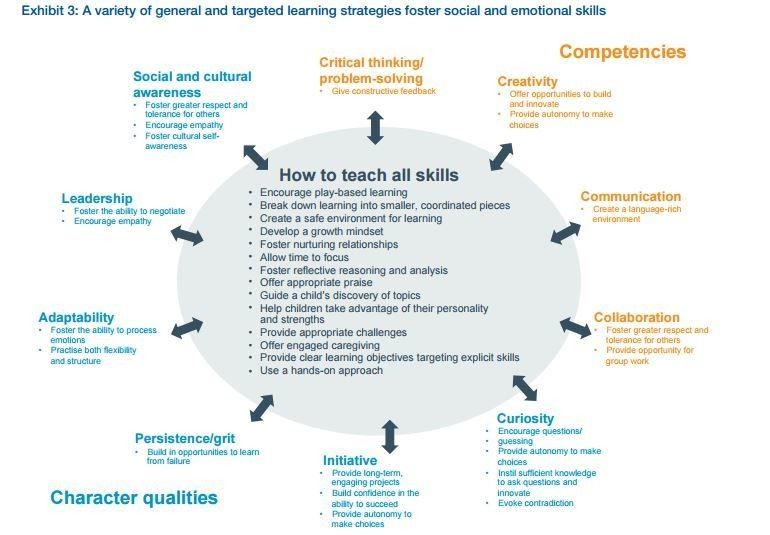
Weekly word cards support English language development and enhance reading comprehension.
6. Encourage reading comprehension
It's crucial to every student's academic success to develop reading comprehension abilities. A variety of teaching methods, combined with consistent reading assignments, should help build comprehension and vocabulary development.
Below, you’ll find a few tips to help strengthen your students' reading comprehension skills:
- Class discussion about books they're reading. Talking about books helps students to remember the stories and promotes comprehension.
- Phonics. Practicing phonics is a fun way for kids to build their vocabulary skills. Phonics helps students master sounds and differentiate between letters that sound the same as "s" and "th".
- Reading grade-appropriate books. Give your students books suited for their grade level. Books should be easy enough for kids to understand the story's meaning but challenging enough to expand their vocabulary.
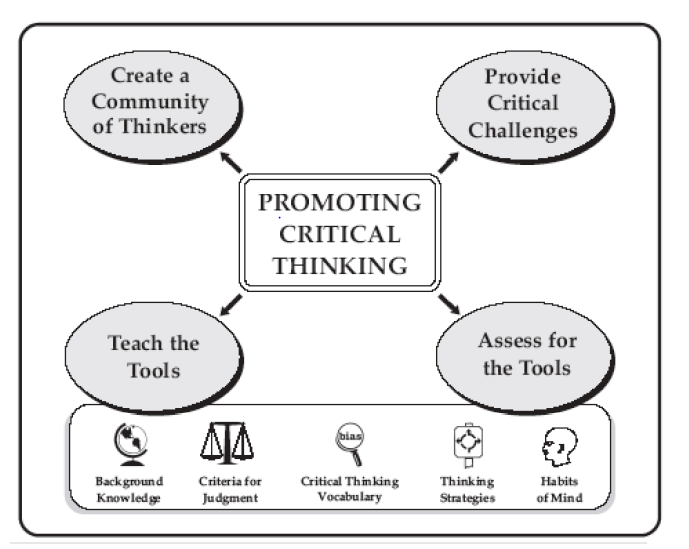
- Read aloud. Get students to take turns reading aloud to help them see words and to hear them, too. They can learn how to pronounce the words as they go. Be mindful of students who might find reading aloud in front of the whole class to be daunting. If any students come to mind, it can help them to read aloud to a partner, teacher, parent or small group.
7. Use visuals and situations
When possible, use meaningful visuals in your classroom. Flashcard tools like Vocabulary Cartoons help students connect words to fun cartoons through memory techniques. This program works well from the elementary grades through to high school.
Use the following visual vocabulary teaching strategies with your students:
- If you've created a word wall, ask your students to make paper flashcards with new words and their definitions. Display the flashcards for the entire class to look at every day. Make sure you change the words each week so that they continuously learn new words and phrases.
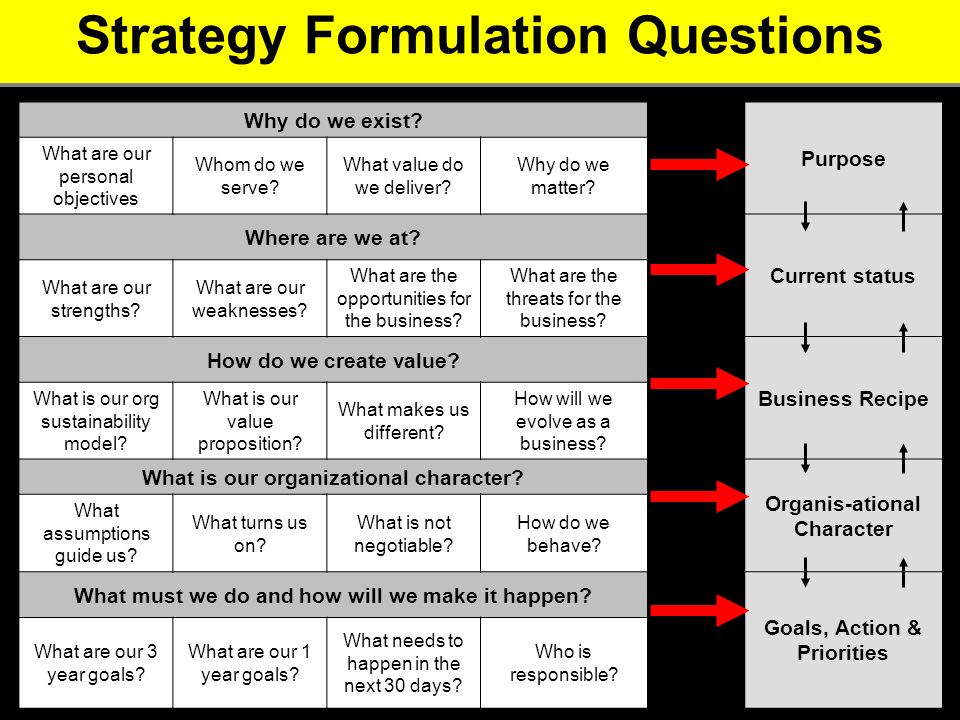
- Turn your students into word detectives! This fun activity gets kids to read books while searching for keywords. Hand them a list of keywords to find in the book. When they find the keywords used in sentences, encourage them to use those words in spoken and written sentences.
- Kids love art, so why not get them to create drawings to express their understanding of words? Students can form their own connections to new words through drawings, patterns, and other examples.
Make new words fun to learn! Combine visuals such as graphics and photos with auditory learning to cover a range of learning styles and make it easier for students to learn new words.
Using word-learning strategies
Word-learning strategies allow students to familiarize themselves with words and phrases. Instead of having partial knowledge, they'll learn the meaning of the word and any related words. Students can develop word consciousness with the help of quality reading materials and practical teaching methods.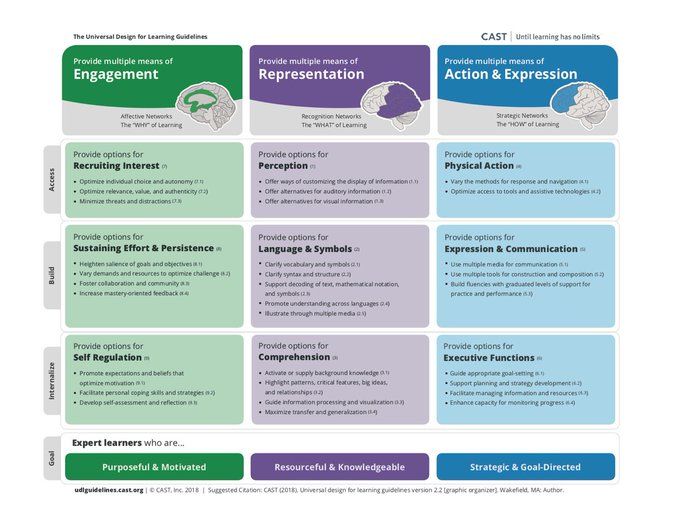
Break down words into meaningful parts
Word parts are root words you can add a prefix or suffix to make a new word.
Allowing students to read keywords and add prefixes or suffixes helps them garner the meaning of those words based on how it's used in a sentence. Give your students opportunities to guess the meaning of word parts to support their vocabulary growth.
Word parts work best for students with a larger vocabulary.
Ask questions about a word
One way for students to learn words involves understanding the definition, how it works grammatically and its subtext. Motivate your students to ask questions such as:
- Does the word have a masculine or feminine version similar to other languages?
- How can I use the word in more than one sentence?
- Does the word have several meanings? Homonyms such as "pen" can mean an instrument to write with, or an animal enclosure.
When students deepen their word knowledge, they'll gain confidence in their ability to strengthen their vocabulary.
Reflect and practice new words
Some words are easier to learn than others. Inspire your students to test their word knowledge and determine areas where they need help. They might require assistance in boosting their confidence to use those words in sentences or to speak them with confidence. Also consider that they may not fully understand the meaning of those words.
Encourage your students to reflect regularly on new words and use them in their everyday conversations. This is where vocabulary notebooks come in handy to build word knowledge!
Additional vocabulary activities
Bring words to life through vocabulary development activities! There are lots of fun things you can do in the classroom that encourage students to practice vocabulary.
Try these activities to boost kids' vocabulary skills:
- Guided word sorting. Give your students a list of words to sort into various categories, such as parts of speech (noun, verb, etc.
 ), geography (cities, towns), or something they can relate to. Students develop an understanding of new words as they group them into categories. Turn word sorting into a fun game!
), geography (cities, towns), or something they can relate to. Students develop an understanding of new words as they group them into categories. Turn word sorting into a fun game! - Word fixes (on-purpose errors). Use a word incorrectly in a sentence and ask your students to correct the mistake. Choose one or more students to write the word correctly in a sentence and share it with the rest of the class.
- Make mind maps. Mind mapping involves the use of colored pencils and pens to create a graphic of how the keyword connects to other words, similar to the semantic map.
With these fun activities, vocabulary isn’t just another spelling quiz — it’s a core part of your instruction that supports everything else you teach.
Prodigy English is a brand-new adventure that helps students master key vocabulary skills in a world of their very own.
Every correct answer gives students more energy they can use to gather resources, craft items and build their very own village! Create your free Prodigy teacher account to track student progress, send assignments and help build a love of learning.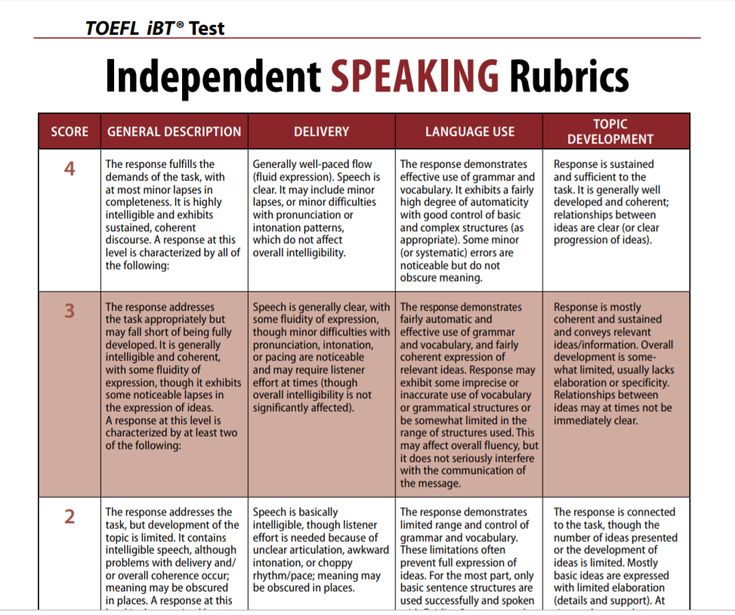
Five Research-Based Ways to Teach Vocabulary
Did you know that typically, only 5% to 10% of instructional time is devoted to vocabulary instruction, yet students, especially struggling students and English learners (ELs), need between 12 and 14 exposures to words and their meanings to fully learn them (Durkin, 1978/79; Roser & Juel, 1982; Scott, Jamieson, Noel, & Asslin, 2003)? Teaching the meanings of important words before learning new content activates students' background knowledge and prepares them for learning and comprehending. In other words, teaching vocabulary provides the “Velcro” for new information to “stick to.”
What Research Says About Effective Vocabulary Instruction
Vocabulary instruction must be explicit. Explicit vocabulary instruction includes an easy-to-understand definition presented directly to students along with multiple examples and nonexamples of the target word, brief discussion opportunities, and checks for understanding.
Vocabulary instruction must include multiple practice opportunities for using words within and across subjects. That is, instruction must be extended over time with opportunities for students to hear, speak, read, and write words in various contexts. This builds students’ breadth and depth of vocabulary knowledge.
Vocabulary should be taught schoolwide and across all subject areas. Each subject has a unique set of vocabulary terms, and students need to know their meanings and how to use them in various contexts.
Word Selection
Instructional time is precious, and teachers are not able to address every unknown word students might encounter, so careful word selection is key. When deciding which words to target for explicit instruction, consider words that are
- essential to understanding the main idea of the text or unit,
- used repeatedly or frequently encountered across domains, and
- not part of students’ prior knowledge.
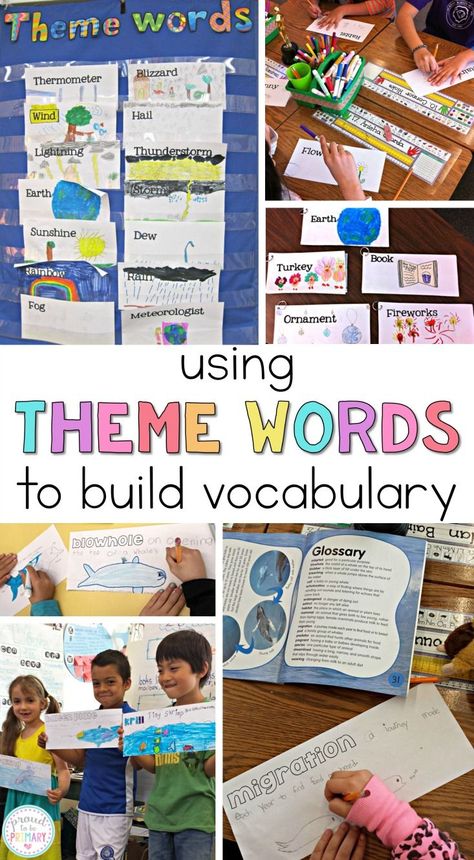
ELs may require even more careful word selection and extensive vocabulary instruction because they may be learning conversational language and academic language at the same time. Colorín Colorado provides additional information about selecting vocabulary words to teach ELs.
Some of Our Favorite Vocabulary Instructional Activities for ALL Content Areas
The five activities described below are effective ways to teach vocabulary for all students, but especially for struggling students, students with learning disabilities, and ELs.
1. Essential Words Routine
Teachers use a simple graphic organizer to preteach the meanings of important words in about 5 minutes per word. During this routine, teachers introduce target words with definitions, visual cues, and examples. Students engage in immediate practice using the words through collaborative student turn-and-talk activities.
Resources- Vocabulary Maps Toolkit from Middle School Matters
- Reading Instruction for Middle School Students: Developing Lessons for Improving Comprehension (see page 11)
2.
One way to have students extend their knowledge of important words is through a Frayer model. This graphic organizer builds vocabulary and conceptual knowledge across content areas. The strategy requires students (not the teacher) to define a vocabulary word and then list its characteristics, examples, and nonexamples. Frayer models can be completed in collaborative groups using textbooks and other subject-matter materials while the teacher circulates around the classroom and assists students.
Resource
Online module, examples, and templates from the IRIS Center
3. Semantic Mapping
Semantic maps visually display and connect a word or phrase and a set of related words or concepts. Implementing semantic map activities in your classroom will help students, especially struggling students and students with learning disabilities, recall the meanings of words and understand how multiple words or concepts “fit together.” Teachers will find that using a semantic map, combined with explicit instruction and practice opportunities, is an effective way of expanding students’ vocabulary and supporting their content knowledge.
Resources
- Introduction to semantic maps and sample lesson plans from the Developers of PowerUp What Works
- Semantic mapping teaching strategy guide from PowerUp What Works
4. Vocabulary Review Activities
Multiple opportunities to practice using new words is an important part of vocabulary instruction. In previous TCLD research studies, brief review activities were built into novel unit lesson plans to help students practice (and remember) the meanings of important words. Each of these activities takes 5 to 10 minutes and is easy to prepare.
- Partner Review Routine: Partners work together to quickly review words learned the previous day.
- Sentence Review Routine: Partners create sentences using words assigned by the teacher.
- Examples and Nonexamples: The teacher tells students scenarios or shows pictures and students respond chorally to each scenario, indicating whether it is an example or nonexample.
- What Word Fits? The teacher asks a question and student partners hold up an index card with the word that fits or answers the question.
Resource
Each activity is described in more detail beginning on page 33 of the TCLD booklet Reading Instruction for Middle School Students: Developing Lessons for Improving Comprehension
5. Morphemic Analysis Routine
Explicit instruction of words is important, but it is impossible to teach all the unfamiliar words students will encounter. One way to help students develop strategies for approaching unfamiliar vocabulary is to teach morphemes (prefixes, roots, and suffixes). Students can be taught the following morphemic analysis routine to help them engage in independent word study.
Resource
Learn more about the morphemic analysis routine by reviewing this online learning module from the Texas Adolescent Literacy Academies.
Have questions? Feel free to drop us a line!
Development according to the strategy "Rotation by stations"
Russian lesson 2nd grade
Topic : Words with ZhI-SHI combinations. THICKET. CHU-SHU.
Lesson type : learning new material.
Lesson method: interactive.
Equipment : textbook 2 cl. cards. slides. Pictures .chalk. board
Targets : replenishment and expansion of vocabulary. Ability to use vocabulary expansion strategies. To generalize children's knowledge of hissing sounds, to form the ability to correctly write combinations with hissing sounds. Develop attention. Cultivate love for the lessons of the Russian language. Group work.
Expected results : STUDENTS: Use the Station Rotation strategy. Use of semantic conjecture through context. They work together (in a study group) AND INDEPENDENTLY.
Form of organization of work in the class : work of the whole class, work in small groups, individual work.
Prior to the implementation of the strategy: set up four small group spaces. Students will move from one group to another. These places will be called stations. The transition from station to station is rotation.
Form three groups of students, taking into account the results of the assessment of the level of vocabulary and the results of the teacher's observation.
Lesson progress:
Welcome. Preparing for the lesson. Class motto. Evaluation criteria.
- Do you guys like to travel? What mode of transport can be used to travel? Let's all go on a journey on a fun little train together. We will stop at stations. What is a station, what is this place? Today we are going to the country, and guess which one.
Let's start the lesson: You have route sheets on your tables. You will take them and walk around the stations. All assignments will be completed in writing. To do this, you have everything you need on the tables.
Let's take a fascinating journey to the land of words. Guess the riddle and name 1 station.
BOARDS are running along the path. Yes, legs. (ski) picture . 2. They look into the cracks. They are afraid to jump out. (Mice)
From the hot well. It pours through the nose (Teapot) The tail wags, toothy and does not bark. (pike)
Let's call the station "spelling"
Assignment: The students receive the task exercise 68 p. 41 Pictures (Cup. Tea, Clock. Fresh bread) write these words in the route sheets. Select spelling.
2 -Dictionary words - is this?....... these are words whose spelling cannot be checked, you need to remember.
Station "Vocabulary" read the text write down the words you need to remember. Exercise 68. Draw these phrases.
Station 3 tell me what hissing sounds do you know? Which ones are solid? which are soft?
Task: write down words with soft sibilants and hard sibilants. Exercise 68.
Students open the textbook and start working. time 15 minutes .
Station 4 - you guys help your parents at home. if your friend finds it difficult to complete the task, you will come to his aid. ?
4 Pomogayka station Group work. The students read Exercise 68. And discuss the relationship between the keywords. And reinforce the spelling.
Well done !!!!!
Reinforcement:- Write the words in two columns. On the left are the names of insects, on the right are the names of birds.
Butterfly, siskin, swift, bumblebee, beetle, rook, bee, cuckoo, goldfinch, fly.
Change the words to look like Butterfly - butterflies.
REFLECTION - Did you like the lesson? What rule did we remember today? Formulate the final result of your work in the lesson.
House. ass Exercise 70.
Updated IT development strategy in Russia. New course or logical continuation?
At the end of 2018, the Ministry of Digital Development, Telecommunications and Mass Media submitted a draft updated strategy for the development of the information technology industry covering the period 2019–2025 with a view up to 2036. The document emphasizes that it is about updating the 2014-2020 strategy. In the new document, more attention is paid to the issues of import substitution of software products for the defense industry, government agencies and strategically important enterprises. The authors of the project summarize: "The Russian IT industry has the potential for global competitiveness and should become one of the most important growth points for the Russian economy until 2036."
The new strategy proposes to take into account the “special scenario” of IT development in Russia, in which a long-term aggravation of the international situation makes it necessary to restrict access to imported products. Thus, state-owned companies are ordered to switch to Russian software by 2021.
The project was sent for comments and proposals to AP KIT, ARPP "Domestic Soft", Russoft, Competence Center for Import Substitution in the field of ICT, Financial University under the Government of the Russian Federation, Russian Academy of Sciences, Rosatom, Vnesheconombank, Ministry of Finance and a number of others organizations and federal agencies.
Like the original version of the document, approved in 2013, the new strategy defines the goals and main directions for the development of the IT industry, as well as the mechanisms and ways to achieve the goals. What is the reason for the appearance of a draft of a new strategy before the expiration of the previous one? According to the participants of the Russian IT market, this is due to both technological and political changes that have taken place in the world.
RUSSOFT President Valentin Makarov believes that the emergence of a new strategy for the development of the IT industry is caused by "critical changes in the world order that are taking place before our eyes and are associated with the formation of a new technological order": "There is a transition to the 6th Technological on the convergence of information technology and all other sectors of the economy. This is what is called “Digital Transformation”, or the transition from human-controlled systems to cyber-physical systems. Naturally, at this stage, the role of IT becomes critical, and therefore their development requires a new strategy. Since each time during the transition to a new technological order, intercountry contradictions and the struggle for new markets become aggravated, IT becomes the arena of geopolitical struggle. And this fact also makes it necessary to build a new IT development strategy.”
According to Ruslan Usov, technical director of ITs TELECOM-SERVICE, the appearance of a new version is quite logical. The updated strategy is a continuation of such documents as the Strategy for the Development of the Information Society in the Russian Federation for 2017–2030 and the Digital Economy Program. “Over the past five years, the IT industry has undergone significant changes driven by changes in politics, business and technology,” Usov emphasizes.
Alexey Smirnov, General Director of Basalt SPO, believes that the new version of the strategy was proposed because the state realized the importance of technological independence in the new political situation. In his opinion, this is not about replacing all foreign products with Russian ones, but about creating an industry that is most important for the country.
“I hope that with the advent of the new strategy, the state's course towards technological independence will be pursued more consistently. The history of unfulfilled decisions is long: this is the government decree “On approval of the plan for the transition of federal executive bodies and federal budgetary institutions to the use of free software for 2011-2015”, and the government order to create a domestic development infrastructure based on free software, and the “Plan transition in 2016–2018 of federal executive bodies and state extra-budgetary funds to the use of domestic office software” dated July 27, 2016. If these documents had been implemented in a timely and accurate manner, we would not have lost almost 10 years,” Smirnov is sure.
“The previous version of the 2013 strategy was created and adopted in a completely different political situation,” recalls Grigory Sizonenko, CEO of IVC. - Russia was assigned the role of a large, but controlled supplier of oil and gas and, at the same time, a consumer of Western technologies on the world stage. Therefore, the main emphasis was placed on the distribution and implementation of imported ready-made solutions, and not on the development of our own technologies. This was the strategy of the state, which does not claim to be among the world leaders in the development of innovative technologies in the field of IT; the strategy of a country that agreed with the obedient consumer behavior model imposed on it. In 2014, the situation began to change dramatically. Therefore, the changes made to the project are an attempt by the state to get away from the catastrophic dependence in which we found ourselves in 90th and zero years. In the draft strategy, an attempt was made to more clearly set the benchmarks for the development of the domestic IT industry.”
According to Dmitry Bessoltsev, Director of the IT Outsourcing Department of ALP Group, the main reason for the appearance of the new document lies in the shortcomings of the old one: “The strategy, created five years ago, was addressed mainly to the upper level, it was not clear either for customers, neither for Russian software developers, nor for other IT market participants. It did not give a detailed assessment of the situation with Russian software - a starting point that would indicate where and where to go. Its second drawback was that the assessment of import substitution trends was too optimistic. Nevertheless, all five years import substitution in IT remained in the focus of the state. The previous strategy was taken into account, it was taken into account all the time by software developers, government customers, and service companies that relied on import substitution. But there was little real “lining” in it.”
According to Bessoltsev, the new strategy is “a more down-to-earth version” and draws on the real experience of import substitution in IT: “Although, of course, the transition of state-owned companies to Russian software by 2021 still looks too optimistic. Because the niche of import substitution has not yet settled down - the processes in it are not built and even practices have not been developed by everyone. Perhaps 2021 is a tribute to the political conjuncture of the market. ”
It is indicative that representatives of the IT market generally positively evaluate the draft strategy, their main concerns are not related to the provisions of the document, but to their implementation. At the same time, experts are rather cautious about possible changes in the alignment of forces of leading IT manufacturers in the market.
“The draft of the new strategy does not give a clear enough answer to many primary questions,” says Svetlana Gatsakova, Director of the Department of Corporate Information Systems (DKIS) at ALP Group. - For example, about the relationship between digitalization and import substitution, about the general design created on the basis of import-independent software of the global information system of the digitalization era, about the role of standards in regulating the IT industry and ensuring that the developments of different companies can be easily combined into various integral systems without creating connectivity and compatibility issues. Equally important is whether the funding will go directly to developers of IT products and services. Or it will go through large state-owned companies, which can bury a significant part of the money in endless R&D or cut off a significant “rent” for themselves, and give real developers only a small share, depriving them of resources for development. Whether we like it or not, medium-sized businesses in Russia have real software development experience. And this should be taken into account in the strategy.
According to Gatsakova, the extent of the real impact of the strategy on the development of the IT market will depend not so much on the content of the published project, but on whether market participants can form a fairly complete set of proposals and amendments, and the state can impartially consider them and really hear the industry IT. If this happens, then the new strategy will definitely have a positive and even unprecedentedly positive impact on the development of the Russian IT market. And then the public administration system and state-owned companies will be able to switch to Russian software not only by the scheduled date, but even earlier. And move faster towards it.
Svetlana Gatsakova draws attention to the fact that one strategy is not enough to grow the number of IT companies and redistribute their roles: “The important thing is how quickly large projects appear, what their funding will be, how it will be distributed and whether the principle of inescapable responsibility will be implemented for the received (or not received) results. If a flow of orders appears and does not dry up, if customers do not squeeze all the juice out of the contractor, but can leave him enough resources for development, then the number of IT product and service manufacturers will grow steadily. Depending on the project financing scheme, either developers and service companies creating software and services, or authorized companies redistributing financial flows, can become the leading participants in the IT market. The first option is more conducive to real progress.”
According to Alexey Smirnov, the answer to the question about the impact of strategy on the development of the Russian IT market lies not only in the quality of decisions, but in the discipline of their implementation. Now the situation in this regard is ambiguous. The main problems, according to Smirnov, are associated with “gross violations of the regulatory framework” in terms of the implementation of the rules of competitions (FZ 44 and subsequent resolutions to it): “The regulations contain a number of inconsistent decisions. If the new version of the strategy is embodied in tactical steps as inconsistently, with the same strange decisions, then we are unlikely to have a serious effect. Another example is the introduction of additional requirements for Russian office software, which creates unreasonable preferences for imported software and narrows the class of Russian software included in the register.”
“If we are talking about technology companies, and not about intermediaries for the implementation of ready-made solutions, then there will be no radical changes,” Smirnov believes. — The positions of manufacturers will strengthen, but their pool is unlikely to change significantly. We have a lot of talented developers, but not so many firms that are able to create independent serious developments. All of them are already on the market. The changes will affect the rethinking of the role of Russian technology developers. In previous years, they developed contrary to the main vector of using foreign ready-made solutions. It is extremely difficult for them to compete with global giants, since the market economic base of our products is smaller. Therefore, state support is critically important for developers. At the same time, the growing importance of Russian developers does not at all diminish the role of implementation companies. It is very important that integrators have the competence to create solutions based on domestic products.”
“The strategy contains provisions that have already become a reality,” notes Ruslan Usov. “For business, this is a signal that the government is trying to keep up with the current situation. There is hope that the strategy will help develop the IT business, which, under sanctions, will be able to create new technological solutions that are in demand not only within the country, but also abroad.”
Ruslan Usov does not rule out that the leaders of the IT market may change: “In the wake of projects with PPP (public private partnership), large companies with state participation will come forward, displacing large system integrators who will strive to stay out of sanctions. The need for automation of business processes in the state apparatus will change the demand for specialists in the development of custom software. The lack of such specialists will give impetus to the development of mid-level companies and start-ups that have a developed culture and methodology of software development.” At the same time, Usov is confident that the growth of the IT infrastructure market will undoubtedly continue due to general trends, and not a strategy that is unlikely to have a significant impact on this growth. In addition, the adoption of a new strategy will be an incentive to increase the number of projects in the field of information security.
According to Grigory Sizonenko, the only significant drawback of the project is that it does not pay due attention to the development of the domestic hardware segment: “This is a big strategic mistake. If we want to achieve technological independence, we should not break the segments of software and hardware, but integrate them. It is necessary to consolidate the actions of the Ministry of Industry and Trade, which is in charge of the hardware platform segment, and the Ministry of Communications, which oversees the development of the software segment, within the framework of a unified strategy. It is necessary to provide preferences to Russian manufacturers, strictly control the procurement activities of government agencies, which in every possible way evade the transfer of their IT infrastructures to domestic software and hardware platforms. The transition to Russian software and hardware is a state task of paramount importance. It is clear that a big jump will not happen immediately. We cannot instantly "teleport" into a new technological reality. We will have to step by step go through the difficult path of becoming an IT industry, re-learn how to design and create our own technologies, implement and maintain software and hardware solutions. This requires other competencies. And there are catastrophically few specialists for such a transition who possess them. Therefore, in the strategy it would be necessary to set the task of reorienting the entire education system towards the study, development and use of Russian solutions. Experience will be gained through practical steps and probably at the cost of mistakes.”
Grigory Sizonenko believes that, no matter what, the IT market will be reformatted, this is already happening. Many Russian software developers, which until recently could be called startups, are now acquiring the status of leaders in the IT industry and are starting to significantly influence its reformatting. And large firms that worked as dealers and distributors of foreign technologies are now facing problems. Their business model does not correspond to current realities, they are trying to fit into a market that is rapidly developing according to rules they do not understand. “We can recommend these IT companies to invest in the development of competencies in domestic technologies. This is the trend, and it will not change,” Sizonenko believes. “As a priority, the strategy should state that Russian software should work on Russian processors.”
Dmitry Bessoltsev is sure that the strategy as a document will not affect the Russian IT market in any way: “After all, there are already quite a few documents related to import substitution, and among them there are rather strict regulations. But filling the market with real orders from state corporations and state companies, IT projects coming from the state, will have the most direct and beneficial impact on developers and other participants in the process. It is real orders, the real market, and not just its "image" that will satisfy the needs of the state in terms of its own software - and not by 25%, but by 100%. The strategy alone cannot change the pool of Russian developers. It will not determine which EDMS, for example, will take the lead and in practice become the best import-independent product in its category. This can only be done by the abilities, resources and will of Russian vendors, to make sure that the created solutions work well on import-independent software, and after their implementation, customers would have a minimum of problems.”
“The strategy itself is useful for understanding what is happening and how to act,” sums up Valentin Makarov. — But it is even more important how the state will implement this strategy. In any case, those companies that will be able to offer platform solutions will develop. First of all, these are the companies that will create (and impose on other countries with the help of their state) continental systems of security infrastructure for cyber-physical systems, on which it will be possible to safely implement all classes of cyberphysics - be it unmanned vehicles, telemedicine, smart energy, digital production, etc.



